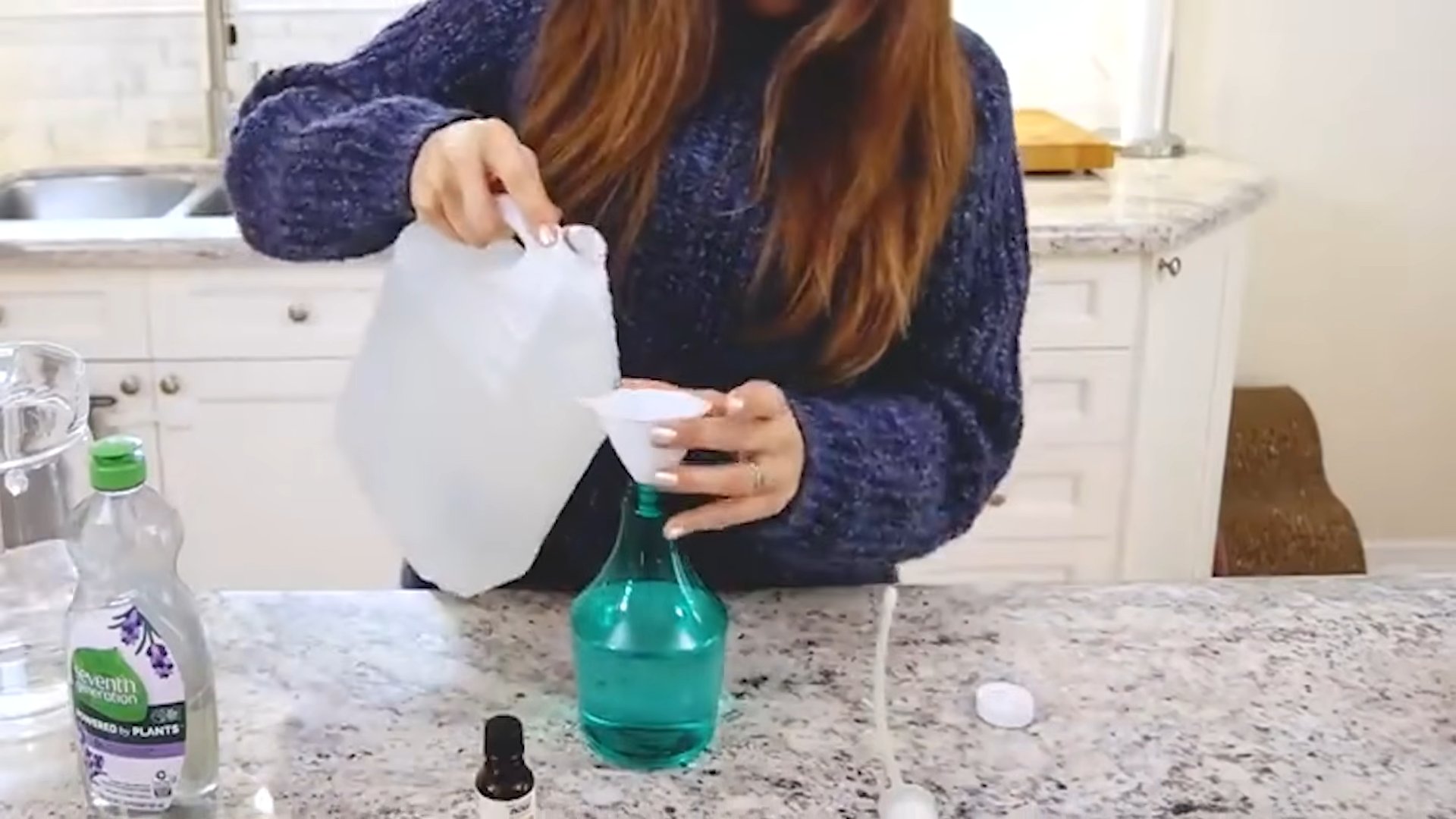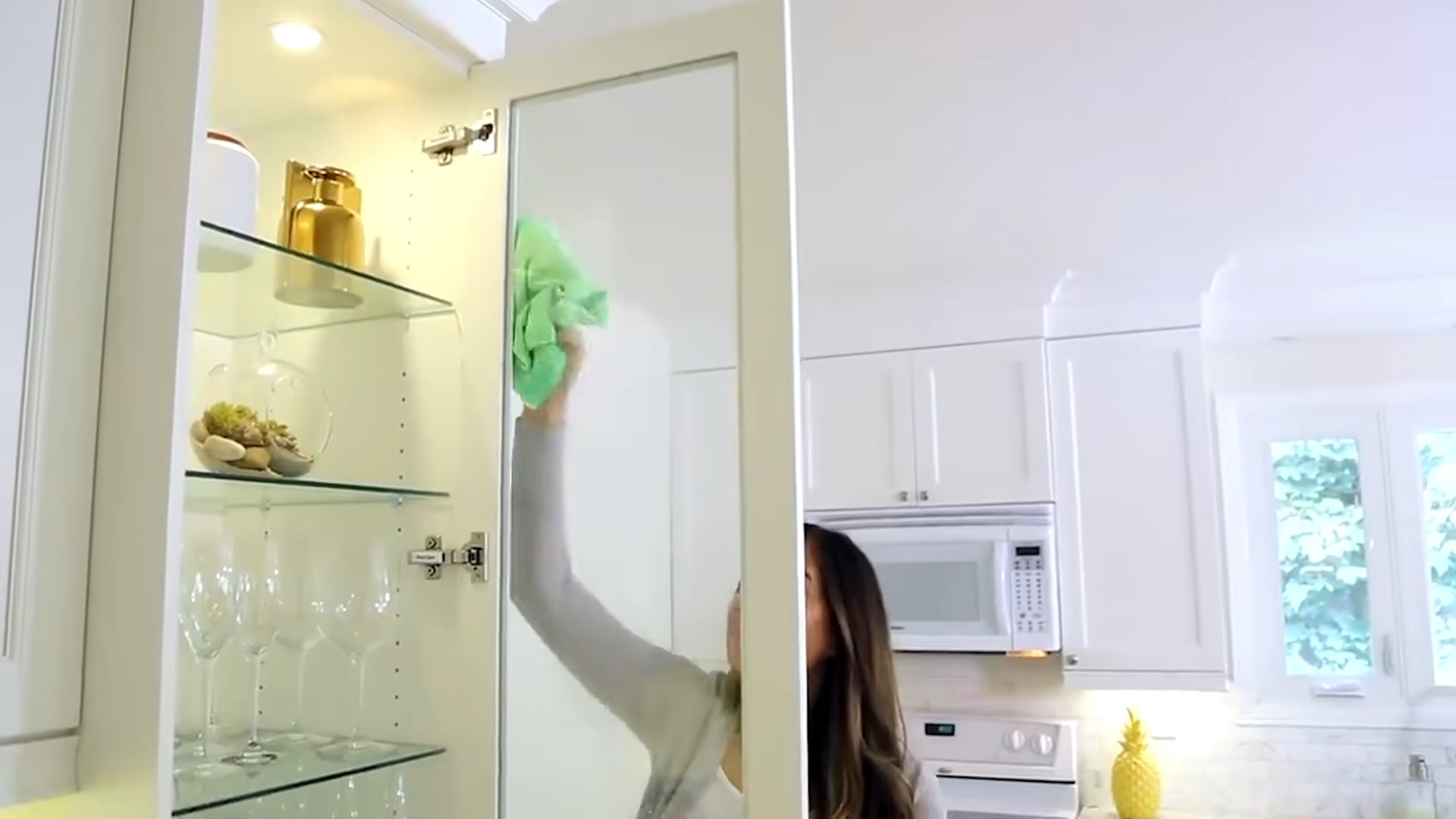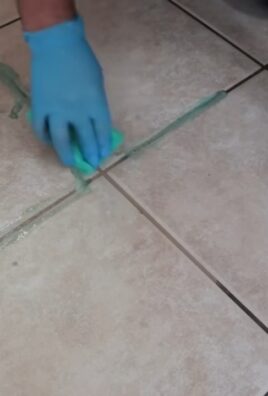Rubbing Alcohol Cleaning Hacks: Unlock the Sparkling Secrets to a Spotless Home!
Ever feel like you’re battling a never-ending war against grime and germs? I know I have! But what if I told you the secret weapon to winning that war was probably already sitting in your medicine cabinet? We’re diving deep into the world of rubbing alcohol cleaning hacks, and trust me, you’re going to be amazed at what this humble liquid can do.
While rubbing alcohol might not have a glamorous history steeped in ancient traditions, its modern-day applications are nothing short of revolutionary when it comes to cleaning. For decades, it’s been a staple in first aid kits, but its potential extends far beyond disinfecting cuts. Think of it as a multi-purpose marvel, ready to tackle everything from stubborn stains to sticky residues.
Why do you need these rubbing alcohol cleaning hacks? Because let’s face it, nobody wants to spend hours scrubbing and stressing over messes. These simple, effective tricks will save you time, money, and a whole lot of elbow grease. Plus, many commercial cleaners are packed with harsh chemicals. Rubbing alcohol offers a more eco-friendly and often more effective alternative for a variety of cleaning tasks. So, get ready to transform your cleaning routine and discover the sparkling power of rubbing alcohol!

Unlocking the Cleaning Power of Rubbing Alcohol: Your Ultimate DIY Guide
Hey there, fellow DIY enthusiasts! I’m about to let you in on a little secret weapon in my cleaning arsenal: rubbing alcohol, also known as isopropyl alcohol. This stuff is seriously amazing! It’s not just for disinfecting cuts; it’s a powerhouse cleaner that’s cheap, effective, and surprisingly versatile. I’m going to walk you through some of my favorite rubbing alcohol cleaning hacks that will leave your home sparkling. Get ready to be amazed!
Why Rubbing Alcohol?
Before we dive into the hacks, let’s quickly chat about why rubbing alcohol is so awesome.
* Disinfectant Extraordinaire: It kills germs like nobody’s business. Perfect for sanitizing surfaces.
* Evaporates Quickly: No streaks or residue left behind! This is a game-changer for shiny surfaces.
* Grease Cutter: It dissolves grease and grime with ease.
* Mold and Mildew Fighter: Helps prevent and eliminate those pesky growths.
* Affordable: You can find it at any drugstore or supermarket for a steal.
Hack 1: Sparkling Mirrors and Windows
Tired of streaks on your mirrors and windows? Rubbing alcohol is your answer!
What you’ll need:
* Rubbing alcohol (70% or 91% is fine)
* Spray bottle
* Microfiber cloth
Step-by-step instructions:
1. Prepare the solution: Pour rubbing alcohol into your spray bottle. No need to dilute it!
2. Spray the surface: Lightly mist your mirror or window with the rubbing alcohol. Don’t overdo it – a little goes a long way.
3. Wipe it down: Using a clean microfiber cloth, wipe the surface in a circular motion. Then, go over it again with a clean, dry section of the cloth to remove any remaining moisture.
4. Admire your streak-free shine: Seriously, the difference is incredible!
Hack 2: Sanitizing Electronics
Our phones, tablets, and keyboards are germ magnets! Let’s give them a good cleaning.
What you’ll need:
* Rubbing alcohol (70% is recommended for electronics)
* Cotton swabs
* Microfiber cloth
Step-by-step instructions:
1. Power down: Turn off your device and unplug it from any power source. This is super important!
2. Dampen the cotton swab: Dip a cotton swab into the rubbing alcohol, then squeeze out any excess liquid. You want it damp, not dripping.
3. Clean the crevices: Gently clean around the buttons, ports, and edges of your device with the damp cotton swab.
4. Wipe the screen: Lightly dampen a microfiber cloth with rubbing alcohol (again, squeeze out the excess). Wipe the screen in a gentle, circular motion.
5. Dry it off: Use a clean, dry section of the microfiber cloth to dry the screen and any other areas you cleaned.
6. Wait before powering on: Let your device air dry completely before turning it back on. This usually takes just a few minutes.
Hack 3: Removing Permanent Marker
Oops! Did someone get a little too creative with a permanent marker? Don’t panic! Rubbing alcohol can often save the day.
What you’ll need:
* Rubbing alcohol
* Cotton ball or clean cloth
Step-by-step instructions:
1. Test in an inconspicuous area: Before you go all in, test the rubbing alcohol on a small, hidden area of the surface to make sure it doesn’t damage it.
2. Apply the rubbing alcohol: Soak a cotton ball or clean cloth with rubbing alcohol.
3. Gently rub the stain: Gently rub the permanent marker stain with the alcohol-soaked cotton ball or cloth. You might need to apply a little pressure, but avoid scrubbing too hard.
4. Repeat as needed: Keep rubbing and reapplying rubbing alcohol until the stain starts to fade.
5. Clean the area: Once the stain is gone (or significantly reduced), clean the area with soap and water to remove any remaining alcohol residue.
Important Note: This hack works best on non-porous surfaces like plastic, metal, and glass. It might not be as effective on fabric or wood.
Hack 4: Cleaning Jewelry
Give your jewelry a sparkling makeover with rubbing alcohol!
What you’ll need:
* Rubbing alcohol
* Small bowl
* Soft-bristled toothbrush
* Clean cloth
Step-by-step instructions:
1. Soak your jewelry: Pour rubbing alcohol into a small bowl and soak your jewelry for about 10-15 minutes.
2. Gently scrub: Use a soft-bristled toothbrush to gently scrub away any dirt or grime. Pay special attention to crevices and hard-to-reach areas.
3. Rinse with water: Rinse your jewelry thoroughly with clean water.
4. Dry and polish: Dry your jewelry with a clean cloth. You can also use a polishing cloth for extra shine.
Important Note: This method is generally safe for most jewelry, but avoid using it on delicate stones like pearls or opals.
Hack 5: Deodorizing Shoes
Smelly shoes? Rubbing alcohol to the rescue!
What you’ll need:
* Rubbing alcohol
* Spray bottle
Step-by-step instructions:
1. Prepare the solution: Pour rubbing alcohol into a spray bottle.
2. Spray the inside of your shoes: Generously spray the inside of your shoes with rubbing alcohol. Make sure to get into all the nooks and crannies.
3. Let them air dry: Allow your shoes to air dry completely. The rubbing alcohol will kill the bacteria that cause odor.
Pro Tip: For extra odor-fighting power, sprinkle some baking soda inside your shoes after they’ve dried.
Hack 6: Removing Hairspray Buildup from Hair Tools
Hairspray can leave a sticky residue on your curling irons, flat irons, and other hair tools. Rubbing alcohol makes quick work of it!
What you’ll need:
* Rubbing alcohol
* Cotton ball or clean cloth
Step-by-step instructions:
1. Unplug your hair tool: Make sure your hair tool is unplugged and completely cool.
2. Dampen the cotton ball or cloth: Soak a cotton ball or clean cloth with rubbing alcohol.
3. Wipe down the surface: Gently wipe down the surface of your hair tool with the alcohol-soaked cotton ball or cloth. The hairspray residue should come off easily.
4. Dry it off: Use a clean, dry cloth to dry the surface of your hair tool.
Hack 7: Cleaning Bathroom Fixtures
Keep your bathroom fixtures sparkling clean and germ-free with rubbing alcohol.
What you’ll need:
* Rubbing alcohol
* Spray bottle
* Microfiber cloth
Step-by-step instructions:
1. Prepare the solution: Pour rubbing alcohol into a spray bottle.
2. Spray the fixtures: Spray your faucets, showerheads, and other bathroom fixtures with rubbing alcohol.
3. Wipe them down: Wipe the fixtures with a clean microfiber cloth.
4. Let them air dry: Allow the fixtures to air dry for a few minutes. The rubbing alcohol will disinfect and leave them sparkling.
Hack 8: Removing Sticky Residue
Those pesky stickers and labels can leave behind a sticky residue that’s hard to remove. Rubbing alcohol to the rescue!
What you’ll need:
* Rubbing alcohol
* Cotton ball or clean cloth
Step-by-step instructions:
1. Apply the rubbing alcohol: Soak a cotton ball or clean cloth with rubbing alcohol.
2. Rub the residue: Gently rub the sticky residue with the alcohol-soaked cotton ball or cloth.
3. Let it sit: Let the rubbing alcohol sit on the residue for a few minutes to loosen it up.
4. Wipe it away: Wipe away the residue with a clean cloth. You might need to repeat this process a few times for stubborn residue.
Hack 9: Disinfecting Your Kitchen Sink
Your kitchen sink is a breeding ground for germs. Keep it clean and sanitary with rubbing alcohol.
What you’ll need:
* Rubbing alcohol
* Spray bottle
* Clean cloth
Step-by-step instructions:
1. Clean the sink: First, clean your sink with soap and water to remove any food particles or debris.
2.

Conclusion
So, there you have it! Rubbing alcohol, that unassuming bottle in your medicine cabinet, is a veritable powerhouse of cleaning potential. We’ve explored a range of applications, from sanitizing surfaces to banishing stubborn stains, all showcasing the incredible versatility of this simple solution. But why is this DIY cleaning trick a must-try? Because it’s effective, affordable, and readily available. In a world saturated with expensive, chemical-laden cleaning products, rubbing alcohol offers a refreshingly simple and eco-conscious alternative. It cuts through grease, disinfects with ease, and leaves surfaces sparkling without the harsh fumes or hefty price tag.
Beyond the basics, the possibilities are truly endless. Consider adding a few drops of your favorite essential oil, like lavender or lemon, to your rubbing alcohol solution for a pleasant, lingering fragrance. For tougher cleaning jobs, such as removing sticky residue, try combining rubbing alcohol with a bit of baking soda to create a powerful paste. You can even use it to revive dull stainless steel appliances, leaving them gleaming like new. Experiment with different dilutions and combinations to find what works best for your specific needs and surfaces. Remember to always test in an inconspicuous area first, especially on delicate materials.
The real beauty of these rubbing alcohol cleaning hacks lies in their adaptability. Whether you’re a seasoned cleaning enthusiast or just looking for a quick and easy way to tackle everyday messes, rubbing alcohol offers a solution for everyone. It’s a game-changer for busy households, budget-conscious individuals, and anyone seeking a more natural approach to cleaning.
We’re confident that once you experience the cleaning power of rubbing alcohol firsthand, you’ll wonder how you ever lived without it. It’s a simple, effective, and surprisingly versatile tool that deserves a place in every cleaning arsenal.
Now, it’s your turn! We encourage you to try out these DIY cleaning tricks and discover the magic of rubbing alcohol for yourself. Don’t be afraid to experiment, get creative, and find new and innovative ways to incorporate this amazing solution into your cleaning routine.
Most importantly, we want to hear about your experiences! Share your successes, your challenges, and your own unique rubbing alcohol cleaning hacks in the comments below. Let’s build a community of cleaning enthusiasts and learn from each other. What surfaces did you clean? What dilutions did you use? What unexpected benefits did you discover? Your insights could help others unlock the full potential of this incredible cleaning agent. So, go ahead, give it a try, and let us know what you think! We can’t wait to hear your stories.
Frequently Asked Questions (FAQs)
Is rubbing alcohol safe to use on all surfaces?
No, rubbing alcohol is not safe to use on all surfaces. While it’s generally safe for many common materials like glass, stainless steel, and sealed hard surfaces, it can damage or discolor certain delicate materials. Always test rubbing alcohol in an inconspicuous area before applying it to a larger surface. Avoid using it on painted or varnished surfaces, as it can strip the finish. It’s also not recommended for use on certain plastics, as it can cause them to become cloudy or brittle. Leather and some fabrics may also be damaged by rubbing alcohol. When in doubt, consult the manufacturer’s instructions for the surface you’re cleaning.
What is the best concentration of rubbing alcohol to use for cleaning?
The ideal concentration of rubbing alcohol for cleaning depends on the specific task. For general disinfecting, a concentration of 70% isopropyl alcohol is generally recommended. This concentration is effective at killing most bacteria and viruses. Higher concentrations, such as 90% or 99%, evaporate too quickly to be as effective at disinfecting. For cleaning purposes, such as removing grease or grime, a higher concentration may be more effective. However, always dilute higher concentrations with water to avoid damaging surfaces. A good starting point is a 50/50 mixture of rubbing alcohol and water.
Can I use rubbing alcohol to disinfect my hands?
Yes, rubbing alcohol can be used to disinfect your hands, but it’s not as effective as hand sanitizers specifically formulated for that purpose. Hand sanitizers typically contain emollients to prevent dryness and are tested for efficacy against a wider range of pathogens. If you’re using rubbing alcohol to disinfect your hands, use a concentration of at least 70% and rub your hands together for at least 20 seconds, ensuring that you cover all surfaces. Be aware that frequent use of rubbing alcohol can dry out your skin, so it’s important to moisturize regularly.
Is rubbing alcohol flammable?
Yes, rubbing alcohol is highly flammable. Keep it away from open flames, sparks, and heat sources. Store it in a cool, well-ventilated area, away from direct sunlight. When using rubbing alcohol for cleaning, ensure that the area is well-ventilated to prevent the buildup of flammable vapors. Never smoke while using rubbing alcohol.
Can I mix rubbing alcohol with other cleaning products?
No, it’s generally not recommended to mix rubbing alcohol with other cleaning products, especially bleach. Mixing rubbing alcohol with bleach can create toxic fumes that can be harmful to your health. Always use rubbing alcohol on its own or diluted with water. If you’re unsure about mixing rubbing alcohol with another cleaning product, err on the side of caution and avoid it.
How should I store rubbing alcohol?
Store rubbing alcohol in a tightly sealed container in a cool, dry, and well-ventilated area. Keep it away from heat, sparks, open flames, and direct sunlight. Store it out of reach of children and pets. Do not transfer rubbing alcohol to unlabeled containers, as this can lead to accidental ingestion or misuse.
What are some alternative uses for rubbing alcohol besides cleaning?
Besides cleaning, rubbing alcohol has a variety of other uses. It can be used to relieve muscle pain, treat minor cuts and scrapes, remove ticks, and even as a deodorant. It can also be used to clean electronics, such as computer screens and keyboards. However, always use caution and follow the manufacturer’s instructions when using rubbing alcohol for these purposes.
How can I remove sticky residue with rubbing alcohol?
Rubbing alcohol is excellent for removing sticky residue from surfaces. Simply soak a cotton ball or cloth with rubbing alcohol and apply it to the sticky residue. Let it sit for a few minutes to soften the adhesive, then gently wipe away the residue. You may need to repeat this process a few times for stubborn residue. For larger areas, you can spray the surface with rubbing alcohol and then wipe it clean.
Can rubbing alcohol be used to clean eyeglasses?
Yes, rubbing alcohol can be used to clean eyeglasses, but it’s important to use it properly. Use a clean, lint-free cloth and a small amount of rubbing alcohol diluted with water. Gently wipe the lenses and frames, then dry them with another clean, lint-free cloth. Avoid using rubbing alcohol on eyeglasses with special coatings, as it can damage the coating.
What should I do if I accidentally ingest rubbing alcohol?
If you accidentally ingest rubbing alcohol, seek medical attention immediately. Do not induce vomiting unless directed to do so by a medical professional. Rubbing alcohol is toxic and can cause serious health problems if ingested.





Leave a Comment